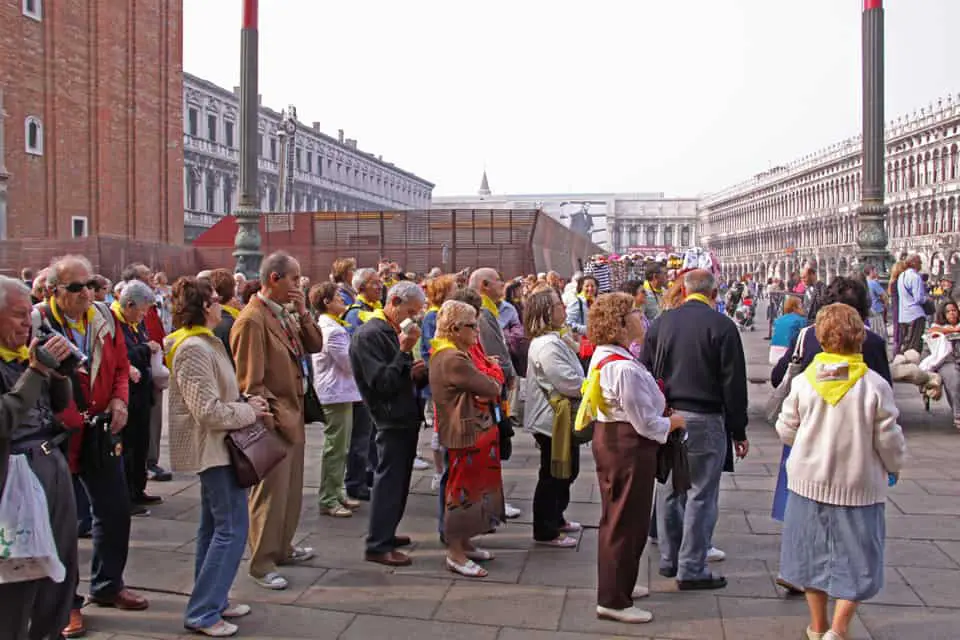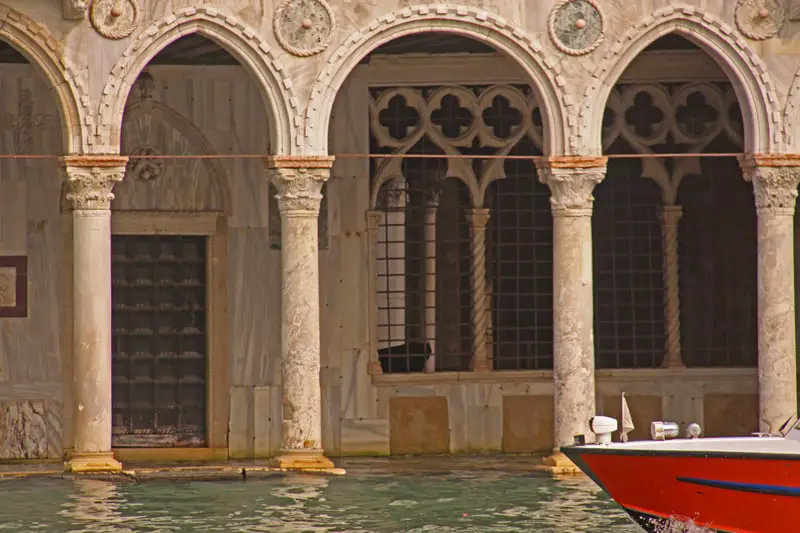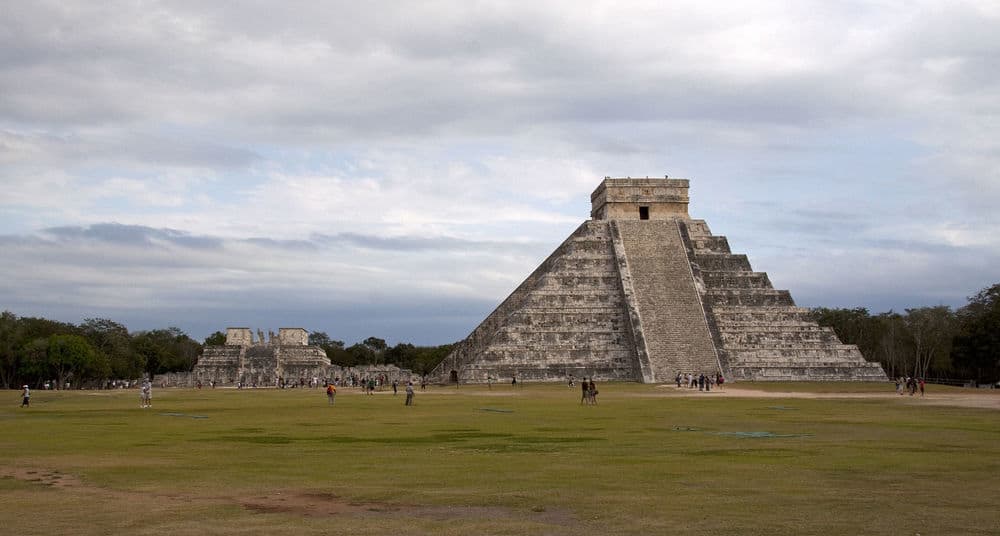Would you pay an entrance fee to visit Venice?
If that headline alarmed you or even angered you, you’re not alone. A recent series of articles in the media have sparked all kinds of debate about the growing problem of tourists overrunning La Serenissima, making the city of Venice anything but calm or peaceful. And not only that, the giant cruise ships that many of these day-trippers arrive on have been causing all kinds of damage, not just from their massive wakes undermining the foundations of the fragile city, but also the sheer amount of pollution that even one of these monster ships generates.
So to combat the issue of Venice being ‘destroyed’ slowly but surely by all of these visitors, the local government has proposed everything from outright bans on the cruise liners to fees for day-trippers who visit the city but don’t actually lodge there.
As you can imagine, this has created all kinds of controversy, everything from the ‘elitism’ that the fee could promote to the fear that Venice is becoming a museum, and not a ‘real’ city at all. Already, tourists pay a different fare on the local vaporetto (boat buses) versus the residents, in an effort by the local government to support Venetians who actually live and work in the city. But are these other suggestions going too far?
I’m not a big fan of cruise ship travel or 2-hour tours that do little more than scratch the surface of a place, and I have experienced first-hand the way these crowds influence the character of the cities they visit. It’s why I recommend splurging on that hotel room to stay at least one night in a city if you really want to see its true character emerge. Venice is an entirely different place when the tenders and tour buses have taken their day-trippers away.
The problem isn’t just Venice. When some cities are seeing as many as 15 million visitors every year, how does the local government cope with the influx of people and still protect the very treasures they’ve all come to see? Living in Toronto, we get our fair share of tourists, too, close to 15 million of them ourselves. But there is a significant difference between Toronto and Venice: Toronto isn’t sinking!
There comes a point when tourism begins to do more harm than good, if only because of the sheer numbers of people each doing minuscule, inadvertent damage. It’s why some of the most famous tombs of Egypt may soon be off limits (fungus and mould resulting from the humidity from visitors’ breath and sweat are threatening the decoration and integrity of these once-sealed chambers.)
It’s also why, since 2006, you can no longer climb the pyramid at Chichen Iza, where intentional damage like graffiti, plus erosion on the steps caused by too many climbers had made the upkeep of the structure – and risk – too high for the government.
Of course, every time I hear about monuments being closed, or access being restricted to them, it makes me want to visit EVERYTHING NOW while I still can! But then, doesn’t that just make me part of the problem?
There’s no simple answer for any of these questions, but it has made me think more about how and when I should travel, and how to respect and help support the place I am going to experience. I’m not rich by any stretch, but I would be willing to pay more for certain experiences if it meant protecting that experience from extinction.
Costs for a safari run high, including national park vehicle fees that are higher for visitors than residents.
I factored in the high costs of camping in the national parks in Tanzania because I knew the money helped protect its wildlife; I willingly paid for a permit to hike the Inca Trail, and scheduled my trip around that date, and maybe someday I will have to pay a visitor fee to go to Venice in high season. And in the meantime, I’ve also begun to consider travelling WAY off-season to certain destinations in the search for a more authentic experience.
In fact, when a friend recently told me that she would be travelling to Rome in November, (not necessarily her month of choice), and asked me what I thought about the timing, I told her it was a GREAT idea! She might actually get to see some of the sights she was hoping to, with far fewer crowds and shorter lineups and as an added bonus she might even get to see a few Romans. Fortunately, there’s no charge for that – unless of course, you encounter these guys!
What do you think? Is there a price that travel is exacting on the very destinations we want to visit? And would you pay a price to help offset that? I’d love to hear your thoughts.




















Timely and hard hitting post. As with all human interaction with our built-up or natural planet, it’s time to pause and reflect If we can continue travelling like it’s 1999.
Since I wrote this, cruise ships have been banned from Venice, Rome has made it a fineable offence to sit on the Spanish Steps or the Trevi Fountain (too much congestion and bad tourist behaviour) and Barcelona residents are literally protesting in the streets against over tourism
There’s no easy solution for sure, but there needs to be more coordination between governments, the travel industry and local representatives to ensure the dollars that travel offers don’t overshadow the actual benefits.
sigh. Life – and travel – was simpler back then in many ways. 😉
Off season and remote places are the way to go. Also staying in one place for longer periods helps on costs.
I visited Venice in late April for a day and the crowds made me crazy. It doesn’t help that I’m probably the only person I know that was not dying to see Venice. There are a few very touristy places that I’ve really wanted and still want to see like Cinque Terre, but I’m happy to go off the beaten path because I believe there is beauty everywhere.
Just this morning, I heard that there is a new proposal to charge visitors to New York when they ride the Staten Island ferry. Seems like municipal governments are also trying to find additional ways to raise revenue.
Times are for ever evolving and changing –
I remember visiting Bali when the Barong dance was still performed by locals for the locals in the street and when we returned a couple of years later, bamboo fencing had been put up and it was then performed behind this for a fee –
I think a day fee for Venice sounds very fair if you’re not injecting any money into the economy via accommodation or in the case of cruise visitors – not even any food purchase –
While there is an argument against preservation and conservation where things of beauty are locked away so no one can experience their beauty – What is their point if no one can enjoy them – but if they get too loved to death their charm and essence can be destroyed, killing their lure and attraction.
The Egyptian tomb you mention will no doubt have to have air locks added to keep temperature and humidity at constant levels – for which, people who want to experience it, will have to pay 🙂
I think we can all expect to be paying more in the future for the experiences that once were more accessible. It’s just a reality of this many people moving around the globe.
I agree … I think places like Venice should incur a fee for tourists who don’t stay the night in the city or nearby. When we were there this year you could hardly move in the day for the cruise ship crowds – it was the same in Dubrovnik as well – really noticeable how huge the crowds were and how lovely the cities were at night when they left. Lovely for us who did stay, but one wonders how much money those crowds spend in a place in a few hours – not much I would think, and they probably do much more damage to the ancient infrastructure. Great post!
There are just some places that can’t handle the traffic like others, so it’s probably inevitable that we will pay more to see them.
I guess that’s part of the reason I find myself heading for wild places where it’s quite likely I won’t see another human being. Those are hard questions you are posing and there is no easy answer. It’s like an area becoming a national park and then getting loved to death. I had always wanted to see Venice but when I see your photo, I’m less inclined to visit.
Love hurts, for sure 😉
Much prefer off season travel, and we completely understand why these steps need to be taken.
It’s more and more how I’m planning to travel as well.
Thought-provoking post, Jane. It’s hard to argue against responsible tourism. We each need to do our part . . .
I agree, whether that means paying more, being more cognizant of our ‘footprint’ or ‘buying local’ where you are at least supporting the countries you visit.